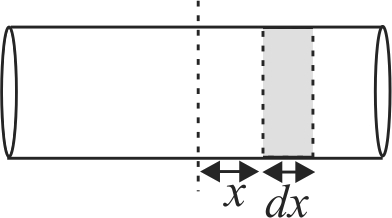365912 Moment of inertia of a body about two perpendicular axes \(X\) and \(Y\) in the plane of lamina are \(20\;kg\;{m^2}\) and \(25\;kg\;{m^2}\) respectively. Its moment of inertia about an axis perpendicular to the plane of the lamina and passing through the point of intersection of \(X\) and \(Y\) axes is
365912 Moment of inertia of a body about two perpendicular axes \(X\) and \(Y\) in the plane of lamina are \(20\;kg\;{m^2}\) and \(25\;kg\;{m^2}\) respectively. Its moment of inertia about an axis perpendicular to the plane of the lamina and passing through the point of intersection of \(X\) and \(Y\) axes is
365912 Moment of inertia of a body about two perpendicular axes \(X\) and \(Y\) in the plane of lamina are \(20\;kg\;{m^2}\) and \(25\;kg\;{m^2}\) respectively. Its moment of inertia about an axis perpendicular to the plane of the lamina and passing through the point of intersection of \(X\) and \(Y\) axes is
365912 Moment of inertia of a body about two perpendicular axes \(X\) and \(Y\) in the plane of lamina are \(20\;kg\;{m^2}\) and \(25\;kg\;{m^2}\) respectively. Its moment of inertia about an axis perpendicular to the plane of the lamina and passing through the point of intersection of \(X\) and \(Y\) axes is
365912 Moment of inertia of a body about two perpendicular axes \(X\) and \(Y\) in the plane of lamina are \(20\;kg\;{m^2}\) and \(25\;kg\;{m^2}\) respectively. Its moment of inertia about an axis perpendicular to the plane of the lamina and passing through the point of intersection of \(X\) and \(Y\) axes is

